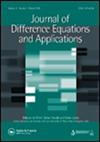Evolution of dispersal by memory and learning in integrodifference equation models
IF 1
4区 数学
Q2 MATHEMATICS, APPLIED
Journal of Difference Equations and Applications
Pub Date : 2023-10-11
DOI:10.1080/10236198.2023.2263099
引用次数: 0
Abstract
AbstractIn this paper, we develop an integrodifference equation model that incorporates spatial memory and learning so that each year, a fraction of the population use the same dispersal kernel as the previous year, and the remaining individuals return to where they bred or were born. In temporally static environments, the equilibrium of the system corresponds to an ideal free dispersal strategy, which is evolutionarily stable. We prove local stability of this equilibrium in a special case, and we observe convergence towards this equilibrium in numerical computations. When there are periodic or stochastic temporal changes in the environment, the population is less able to match the environment, but is able to do so to some extent depending on the parameters. Overall, the mechanism proposed in this model shows a possible way for the dispersal kernel of a population to evolve towards an ideal free dispersal kernel.KEYWORDS: Integrodifference equationmathematical biologyevolution of dispersalideal free distributionspatial memorymigrationMSC: 37N2592-1092D 40 AcknowledgementWe thank the reviewers for their feedback and suggestions, which helped improve the paper.Disclosure statementNo potential conflict of interest was reported by the author(s).Additional informationFundingR. S. Cantrell and C. Cosner received support from NSF Grant DMS-18-53478.积分差分方程模型中记忆与学习扩散的演化
摘要在本文中,我们建立了一个整合空间记忆和学习的积分差分方程模型,使得每年一小部分种群使用与前一年相同的分散核,其余个体返回它们繁殖或出生的地方。在暂时静止的环境中,系统的平衡对应于一种理想的自由扩散策略,这种策略是进化稳定的。在一个特殊情况下证明了该平衡的局部稳定性,并在数值计算中观察到该平衡的收敛性。当环境中存在周期性或随机的时间变化时,种群不太能够匹配环境,但能够在一定程度上依赖于参数。总的来说,该模型提出的机制为种群的扩散核向理想的自由扩散核进化提供了一条可能的途径。关键词:积分差分方程数学生物学分散进化自由分布空间记忆迁移感谢审稿人的反馈和建议,这有助于本文的完善。披露声明作者未报告潜在的利益冲突。额外的informationFundingR。S. Cantrell和C. Cosner获得了NSF基金DMS-18-53478的支持。
本文章由计算机程序翻译,如有差异,请以英文原文为准。
求助全文
约1分钟内获得全文
求助全文
来源期刊
CiteScore
2.10
自引率
9.10%
发文量
70
审稿时长
4-8 weeks
期刊介绍:
Journal of Difference Equations and Applications presents state-of-the-art papers on difference equations and discrete dynamical systems and the academic, pure and applied problems in which they arise. The Journal is composed of original research, expository and review articles, and papers that present novel concepts in application and techniques.
The scope of the Journal includes all areas in mathematics that contain significant theory or applications in difference equations or discrete dynamical systems.

 求助内容:
求助内容: 应助结果提醒方式:
应助结果提醒方式:


